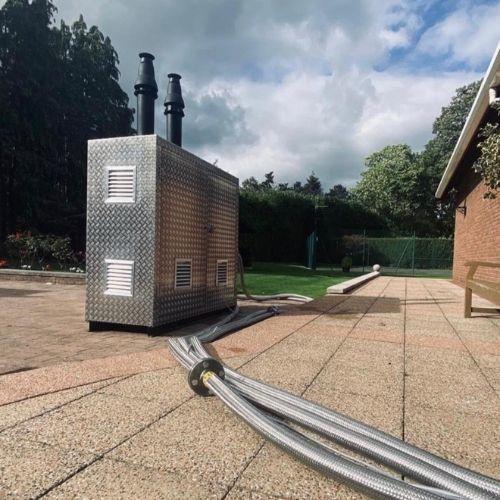No matter what product is in question, getting it to fit right is particularly important. That’s why a cooling system getting sized has several major factors involved with it. When accurate information is at hand, pairing that with an online selector tool can make a world of difference. Frustration will be less, efficiency will all but double and existing systems can even end up serving a larger purpose.
There are several things to consider when an industrial chiller is being sized, such as:
Cooling Capacity
When sizing a chiller, exactly how much the cooling loop gets in terms of heat rejection is easily the most vital factor of all. When a chiller is undersized, several problems can arise, including the likes of:
- Fluid provided by the chiller not being at the proper temperature
- Performance issues with the system being cooled
- Potential for devastating problems to arise
- Triggering of over-temperature alarms, shutting down both process and system
Manufacturers are usually quite good at giving the specifications vital to the proper sizing of a chiller. However, without that (or in the case of in-house designs), experimental or theoretical methods can be used for the heat load to be better defined. In terms of accuracy, however, experimental results work best.
Experimental method:
There are equations involved when this method is put to use:
Q = m x CP x ΔT
can be used where:
Q is the heat load (BTU/hr).
m is the mass flow rate (lb/hr).
CP is the specific heat (BTU/lb-°F).
ΔT is the change in temperature (°F)
Q can be derived after variables are determined for values through the use of thermocouples: a pump and a flowmeter with a cooling fluid. The idea is to be able to collect flow rate data alongside inlet/outlet temperatures.
Theoretical method:
On the other hand, this take involves thermodynamics. Specifically the first law, which talks about saving energy. It can be assumed that all the power entering a device comes from heat as long as electricity’s the only form of energy involved.
Equations are also involved here, such as this, used for calculating the consumption of power:
P = V x I
Cooling Fluid
It’s key to know just how much cooling fluid the system will need. A chiller’s capacity to cool is generally guided by its setpoint temperature. The total cooling capacity of a chiller is directly related to the temperature at which it’s set. Variable loads of temperatures and heat are entirely advisable. Ideally, a user manual and/or the website of the manufacturer should have the pertinent information.
It’s also vital to know exactly what requirements the process loop has in terms of flow and pressure. Pump life can make all the difference between the durability and longevity of the cooling system.
Conclusion
It’s important for a chiller to be sized at any stage, but particularly so for industrial use. There are several things to take into consideration, such as the cooling fluid and cooling capacity. Process loop requirements for flow and pressure should also be factored in.
Looking to get an industrial chiller for hire? Reach out to London Climate Hire today! We’re HVAC specialists offering rental solutions for boilers, chillers, generators and more. We serve clients in London, Berkshire, Buckinghamshire, Essex, Hertfordshire, Kent, Surrey and Sussex.

